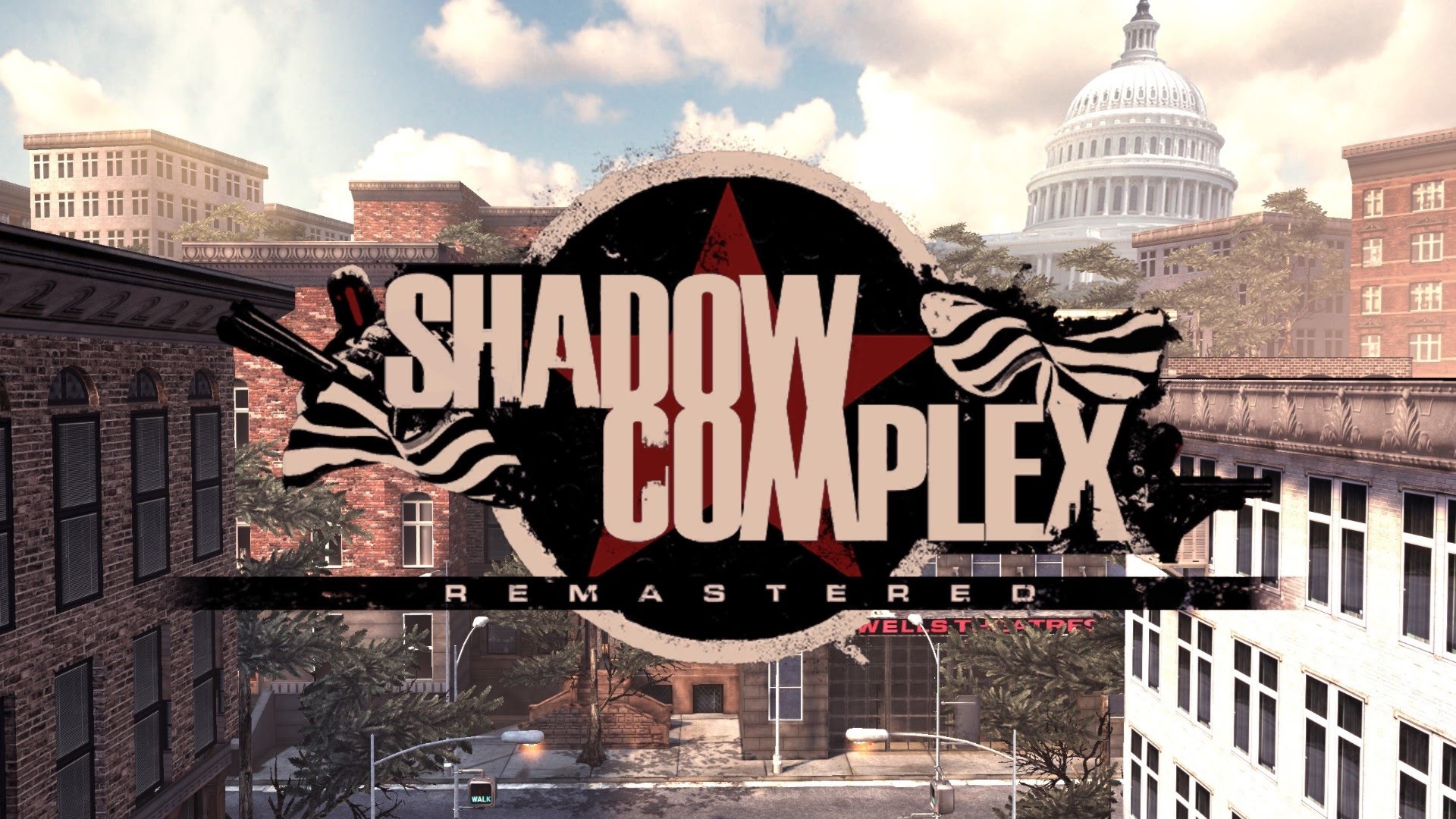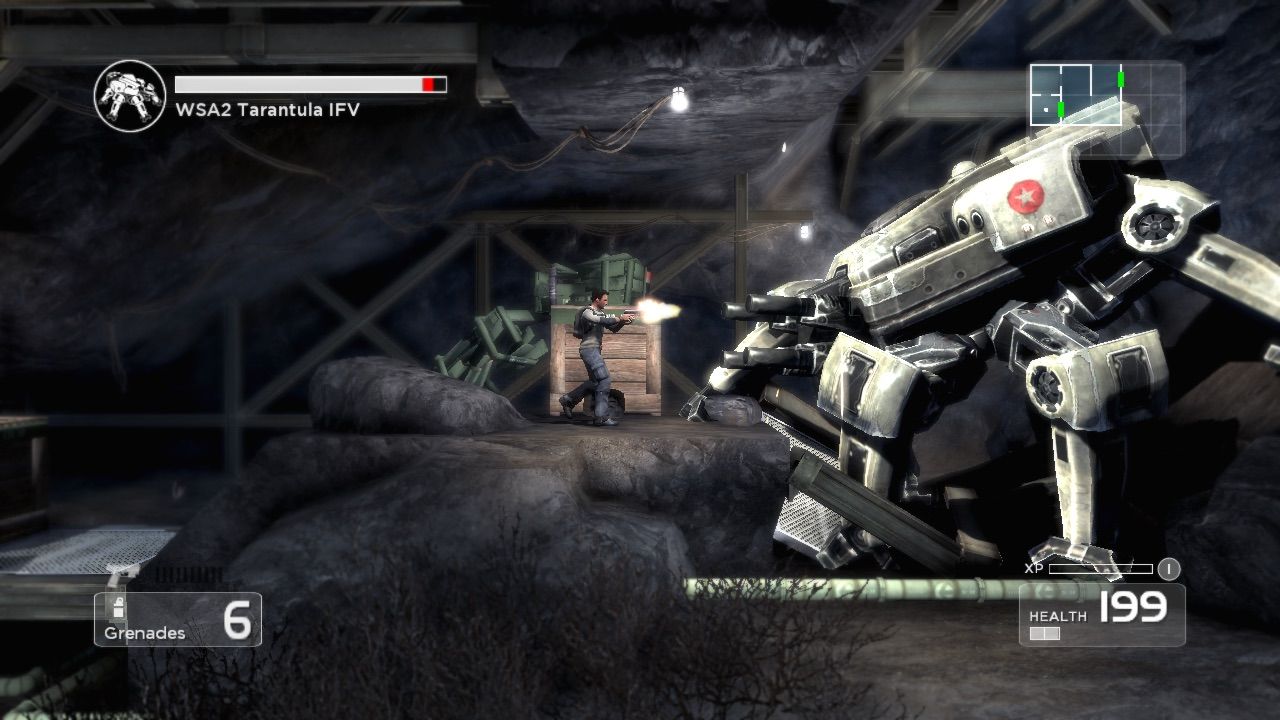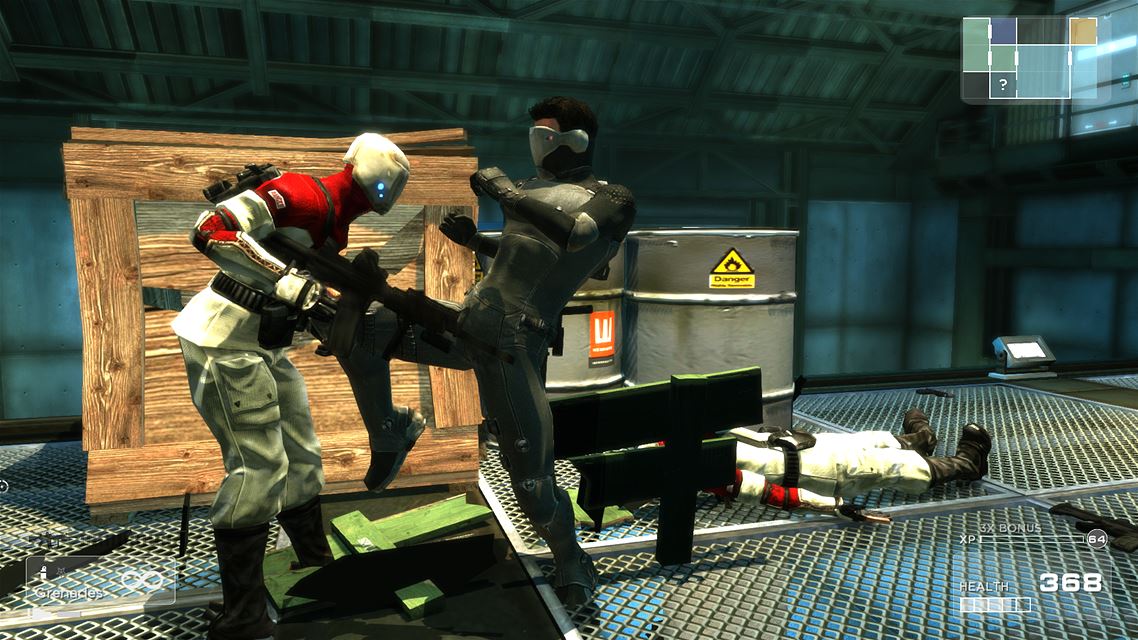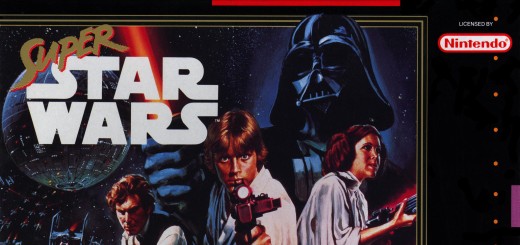SHADOW COMPLEX REMASTERED Review

SHADOW COMPLEX turned a lot of heads back when it released on the Xbox 360 in 2009, proving that downloadable titles were indeed a viable avenue for AAA development. It additionally sparked a resurgence in Metroidvania type platformers while offering its own unique twists on that template. It’s been long enough now that, like everything else these days, we get a remastered edition for the current generation of consoles. But while SHADOW COMPLEX is certainly an important game for the genre, that doesn’t necessarily make it a defining one, and some of its mechanics don’t quite make the jump to present day with the grace you’d expect.
You play as Jason, a dime a dozen Nolan North schlub who goes spelunking with Claire, a girl he just met at a bar. When the pair stumble across a secret base run by high tech domestic terrorists, Jason has to turn the enemies’ weapons against them to save the girl, and the nation, in time to get home for Netflix and chill. For such an old school genre with a suspended sense of reality, SHADOW COMPLEX strangely places a lot of emphasis on its plot, largely with poor results. Jason hurdles insurmountable gauntlets to save a girl he’s known for a period shorter than the sum of GAME OF THRONES, rather than running far, far away from the underground militia. There’s also a stress on his unwillingness to kill, despite the fact that he casually bombs and neck snaps hundreds of goons over the adventure (usually with a corny one-liner to boot).

Y’know, just an average Friday night
The game also goes to great lengths to contextualize its mechanics. For example, a two minute cutscene explains that Claire has been given a special paralyzing agent, explaining why she can’t join you after you free her from her captors, but can still operate a radio station to give you hints throughout the game. Guns are supposedly ID-locked to guards, explaining why they can’t be taken from fallen foes, but on several occasions Jason will just grab a new weapon in a cutscene. Yet this is a game where you can fall several stories without taking a scratch, rooms of slain enemies are re-garrisoned upon leaving them, and first aid supplies glow incandescent blue when shined upon with a flashlight. If the cutaway anthill-style presentation didn’t already suspend the player’s sense of immersion, two minutes of gameplay certainly will. The insistence of trying to keep such an inherently arcadey title grounded is just baffling.
But alas, I’m focusing on the plot of a game that, despite its pretensions, is primarily defined by its gameplay. SHADOW COMPLEX is reminiscent in many ways to Metroid games like FUSION and ZERO MISSION, with the abilities and pacing being nearly identical. The difference here is how SHADOW COMPLEX presents them. Unlike genre icons Samus and Alucard, Jason begins with only a pistol, a flashlight, and a Hot Topic t-shirt, and he feels appropriately fragile and underwhelming in combat. Using cover and running from bigger foes is a major focus in these early stages, thrusting more tactical considerations upon the player than is typical for games of this class. Once Jason acquires his power armor, however, the entire dynamic changes. Enemies that previously required multiple grenades or several clips of ammunition to defeat can now be punted across the room with a hydraulic kick. Rather than having to swim across lakes, diving occasionally to avoid chopper fire, Jason simply sprints at supersonic speeds to the other side. Even a minor task like climbing a ladder becomes enhanced when Jason can use his jetpack to rocket slide to the top. The leap in power from the early segments to later ones is amazingly massive, yet still manages to feel as natural as it is fulfilling.

Time to go to pound town
The main aspect that separates SHADOW COMPLEX from its genre peers is the incorporation of its 2.5D perspective into gameplay. Jason is locked to the 2D foreground, but enemies will often appear from the background, such guards sniping from adjacent catwalks or helicopters coming in from the horizon for a strafing run. This new dimension of gameplay (or half of one, anyway) forces some interesting tactical considerations. When surrounded, Jason has to balance taking cover from enemies on his plane with obstacles to his left and right, while also evading attacks from his sides by utilizing objects in the backdrop.
The mix feels like a fusion of traditional 2D shooters with elements of cover-based light gun shooters like TIME CRISIS, the first and last of its kind. On one hand, it’s an exciting new take on a genre locked to the cardinal directions, but on the other, there’s a reason no game has seriously taken on the formula since. Aiming in 2.5D is a struggle. Jason aims with the right stick pretty much like you’d expect: side to side, up and down, and diagonally. What this input system doesn’t account for is shooting targets to Jason’s direct left or right, or worse, ones that are at his sides above or ahead of him. An auto aim system exists for such predicaments, but it is finicky to work with and will frustratingly override manual aiming. It’s not unfeasible for a fully upgraded Jason to get taken out by background scientists with pea shooters simply because he is unable to fire back at them, a rage-inducing scenario to be sure.

Jason shows the developers what he thinks of their design choices
It should also be noted that the REMASTERED edition is one of the worst of its name. While few titles outside of HALO: COMBAT EVOLVED and THE LAST OF US have received true reimaginings that take full advantage of upgraded hardware, the majority of “remasters” are usually innocuous enough to not rate serious complaint. The recent “HD” re-releases of sixth gen RE titles like RESIDENT EVIL HD and RESIDENT EVIL 4 HD did little more than update to 1080p and add widescreen support, but at least they were consistent. SHADOW COMPLEX REMASTERED updates the game in some areas, such as improved facial animations, but falls flat in most others. Some textures have been updated, but others, particularly those in the background, remain muddy and blurry, and even many of the “new” ones look like they still belong in the last generation. Some half-hearted, glossy, normal mapping results in buildings that look like they’re enveloped in seran wrap, which would have been unacceptable before the original game even came out, let alone now.
SHADOW COMPLEX was a springboard for the medium in a lot of ways. Digital distribution, a focus on narrative in a genre it wasn’t known for, and experimentation with perspective were all features that the game pioneered, and took off in big ways following it. Modern classics like FEZ and even THE WALKING DEAD owe much of their success to the trail blazed by SHADOW COMPLEX. But having a good idea and executing it well are two different stories, and sadly, SHADOW COMPLEX fails at the second. The game had incredible promise, and I don’t think rocket kicking unsuspecting goons into the stratosphere will ever get old, but the key areas that SHADOW COMPLEX focuses on, the innovations it tries to bring to the genre, are so sloppily implemented that they cannot be ignored. It doesn’t help that the modern port is the laziest of its kind, which only reinforces my belief that this is a game that simply belongs in another era. Leave this one in the shadows.
Verdict: Do Not Recommend
Reviewed on PlayStation 4, also available on Xbox One and PC.



